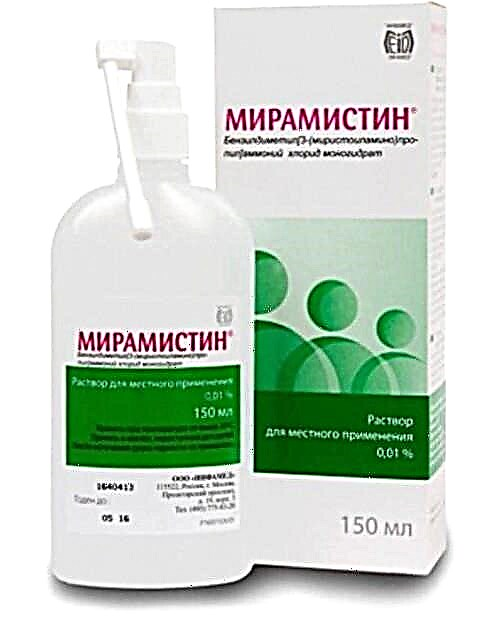The National Program for Optimizing the Feeding of Children 1 Year Old was created with the aim of carrying out comprehensive measures that should help prevent the formation of various disorders in health and development in newborns and infants in the first year of life. This document talks about the importance of programming the health of children under one year of age with nutrition and the need to educate parents about relevant issues in the nutrition of young children.

Baby at breast
The relevance of activities to popularize HS
The national program to optimize the feeding of infants in the first year of life was introduced into the work of all pediatricians and neonatologists of the Russian Federation. The materials of this document are actively used both in practical health care and in the educational process during the preparation of students of medical universities. Also, this program has been introduced into the system of postgraduate training of continuing medical education for pediatricians and nurses.
Nutrition for pregnant women
During pregnancy, women need to eat foods that have been gently cooked. Completely exclude fried foods, foods with preservatives, dyes from your diet.
It is important to control the amount of fat in the diet: limit foods rich in saturated fats and increase the proportion of unsaturated fatty acids by introducing any vegetable oil into the diet. The mother-to-be should consume foods that contain a sufficient amount of vitamins such as D, C, E, B6 and minerals every day. Of the minerals, selenium, zinc, and calcium are especially needed during pregnancy.
The diet of a pregnant woman should contain dairy products, various vegetables and fruits, meat and fish, cereals, legumes and nuts.
Note! The WHO recommends that pregnant women supplement the intake of folic acid (400 mcg) and iron (30-60 mg), as well as calcium (1.5-2.0 g) in the low-intake groups.

Healthy food for pregnant women
Problems of nursing mothers
Many breastfeeding mothers are worried about the amount of milk in their breasts. If the baby starts screaming, they think that the baby is hungry, because he does not have enough milk, and begin to supplement with milk formula. Also, after childbirth, women are constantly in a state of heightened anxiety, they worry about the health of the child. All of this negatively affects the quantity and taste of milk.
The relationship between infant health and nutrition
The state of his health throughout his life depends on the nutrition of the child in the first year. With insufficient or excessive intake of nutrients into the body of the crumbs, deviations in physical development, disturbances in the formation and development of the central nervous system and reproductive function may occur. Also, manifestations of alimentary-dependent diseases and diseases of the digestive organs are possible.

Mom breastfeeds the baby
When and by whom the document was drawn up
The national program for optimizing child feeding was created by the Union of Pediatricians of the Russian Federation under the leadership of Professor K.S. Ladodo. in February 2009. The 4th revised and updated edition of this document was released in 2019.
Objectives of the national program
- Evaluation of nutrition in children of the 1st year of life.
- Development of approaches to optimize nutrition for pregnant and lactating women.
- Optimization of the feeding scheme.
- Development of a unified educational program in the nutrition of infants 1 year of age.
- Development, approval and implementation of regulatory and methodological documents on the organization of nutrition for children, pregnant and lactating women.
Maternal and Newborn Nutritional Standards
From the first feeding and during the first days of life, the newborn should receive only colostrum. The volume of the ventricle in children of the first days of life is no more than 10 ml. The child should eat about 100 ml of breast milk per day. The volume of consumption will increase every day. For a child over ten days old, feed rates can be calculated by multiplying the number of days lived by ten.
Important! The amount of food eaten per day should be 1/5 of the infant's weight.
The basis of the daily nutrition of a nursing woman should include vegetables, fruits, cereals, wholemeal flour products, pasta and potatoes. It is also important to consume dairy products. It is advisable to eat meat, liver or homemade pate once a day. The diet should contain butter and vegetable oil. Sea fish should be included in the diet twice a week.

Baby sucking breast
GW organization according to WHO standards
Immediately after giving birth, the baby is spread on the mother's belly. The sucking reflex in a baby appears 20 minutes after birth. It is preferable to feed the child on demand until 6 months, then you can already build a certain regimen. Each mother determines the continuation of hepatitis B for herself, it is better to maintain it up to 2-2.5 years. It is not recommended to stop breastfeeding during the child's illness, during the vaccination period, in stressful situations and in the summer.
Ten Steps to a Successful GW for WHO
- Compliance with the Breast Milk Substitute Code.
- Providing staff with sufficient knowledge in matters of support of the GW.
- Inform all pregnant women about the importance of breastfeeding.
- Continuous skin-to-skin contact and onset of hepatitis B immediately after delivery.
- Maintaining breastfeeding.
- Newborns should only consume breast milk.
- Joint stay of mother and newborn.
- Teaching mothers to recognize when a baby is hungry.
- Informing mothers about the risks of using bottles and pacifiers.
- Timely support for parents in matters of GV.

Successful GW
Prevention of agalactia and hypogalactia
As a preventive measure, it is worthwhile to carry out a comprehensive stimulation of milk production and the rapid elimination of the causes that have disturbed lactation. To maintain lactation, you need to observe a sleep and rest regimen, drink plenty of water and consume high-calorie foods, avoid stress and physical exertion. It is important to breastfeed your baby regularly.
After giving birth, it is important to immediately apply the newborn to the breast and establish a feeding schedule on demand. It is forbidden to give the baby a pacifier and introduce supplementary food.
Indications for supplementation
From the side of the child:
- The child's body is dehydrated: the child is sluggish, dry mucous membranes, rare urination, constipation;
- Weight loss (more than 8-10%);
- Stool less than once a day or continues to drain meconium on the fifth day.
From the mother's side:
- Milk does not come;
- Primary glandular insufficiency;
- Breast pathologies and operations that provoked insufficient milk production;
- Severe pain while feeding;
- Chronic diseases that affect lactation.

Introduction of supplementary feeding
Organization of breastfeeding for sick children
Recommendation - to carry out activities that stimulate lactation, if the child after childbirth was not attached to the breast and was not near the mother:
- Expressing to the rhythm of feeding;
- Baby sucking stimulation;
- Massage the muscles involved in sucking;
- Using a pacifier;
- Baby feeding on demand.
Mixed or artificial feeding
Reasons for transferring to artificial feeding:
- Hypogalactia;
- Infant breast milk intolerance;
- Contraindications to breastfeeding;
- Refusal of a woman from breastfeeding.
Reasons for transferring to mixed feeding:
- The presence of clinical signs of underfeeding;
- Not enough milk.
New rules for the introduction of complementary foods
Major changes:
- Regardless of the type of food, the child should receive complementary foods from 5 months;
- As the first complementary food - vegetable puree or porridge;
- Introduction of meat from 6 months;
- Introduction of fruit puree for constipation at any period of feeding;
- At seven months, introduce the yolk;
- From eight months - fish puree in complementary foods;
- Serving size of puree or cereals for a baby 5-7 months - 150 g.
By optimizing the nutrition of infants in the first year of life, it will soon be possible to improve the health of all children in the Russian Federation. In addition, the indicator of the level of development will increase.



